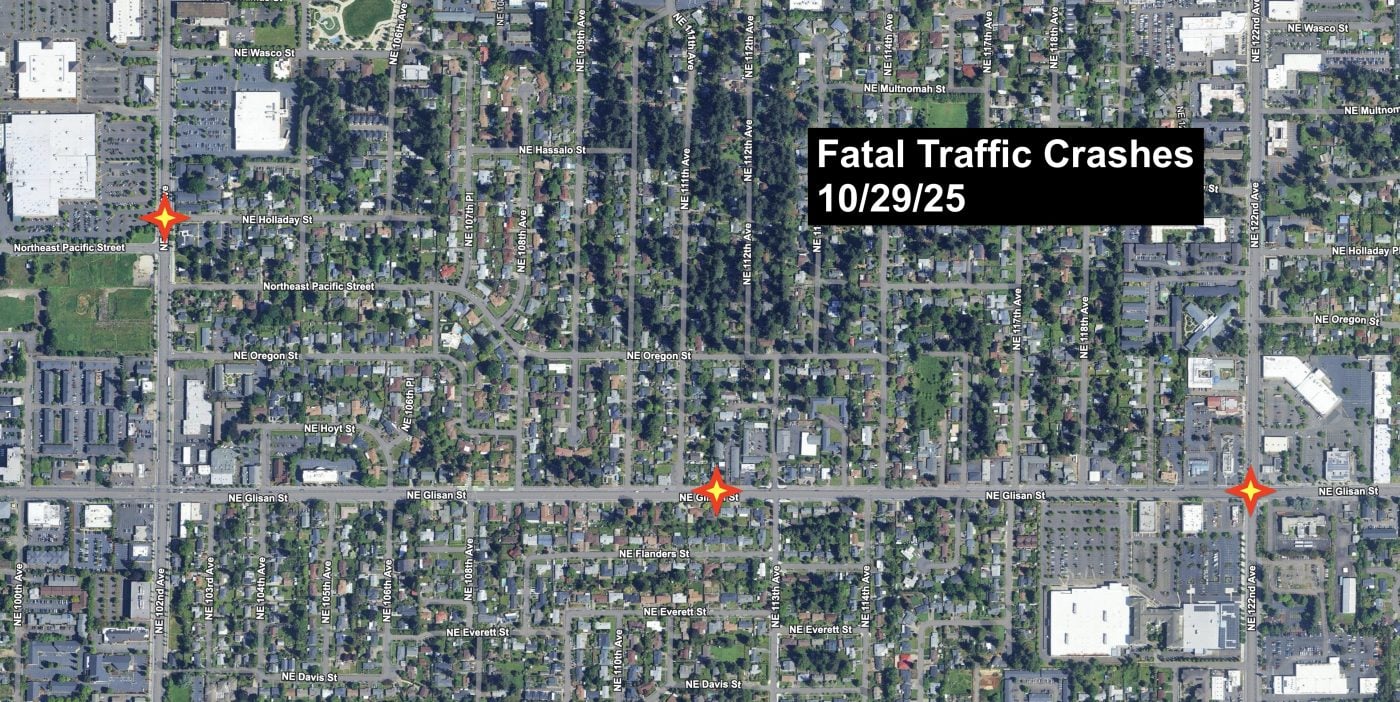
Three people were killed in traffic crashes in East Portland Wednesday night. All the crashes happened in the Hazelwood Neighborhood and were relatively close to each other in both time and location. I’m still trying to learn more details, but here’s what I know so far…
Bicycle Rider – 6:30 pm on NE Glisan near NE 111th
A person riding a bicycle was involved in a collision with a car driver just before 6:30 pm on Northeast Glisan near NE 111th. Emergency responders attempted to save the rider’s life, but they died on the scene. The Portland Police Bureau has talked to the driver and an investigation is ongoing.
According to a BikePortland reader who lives nearby and rolled out to the scene to take a closer look (see photo below), the collision happened in the westbound lanes of NE Glisan just before NE 111th. That location has a “parking protected” design with a paint-only bike lane and a wide buffer from the one adjacent lane. The speed limit is 30 mph.

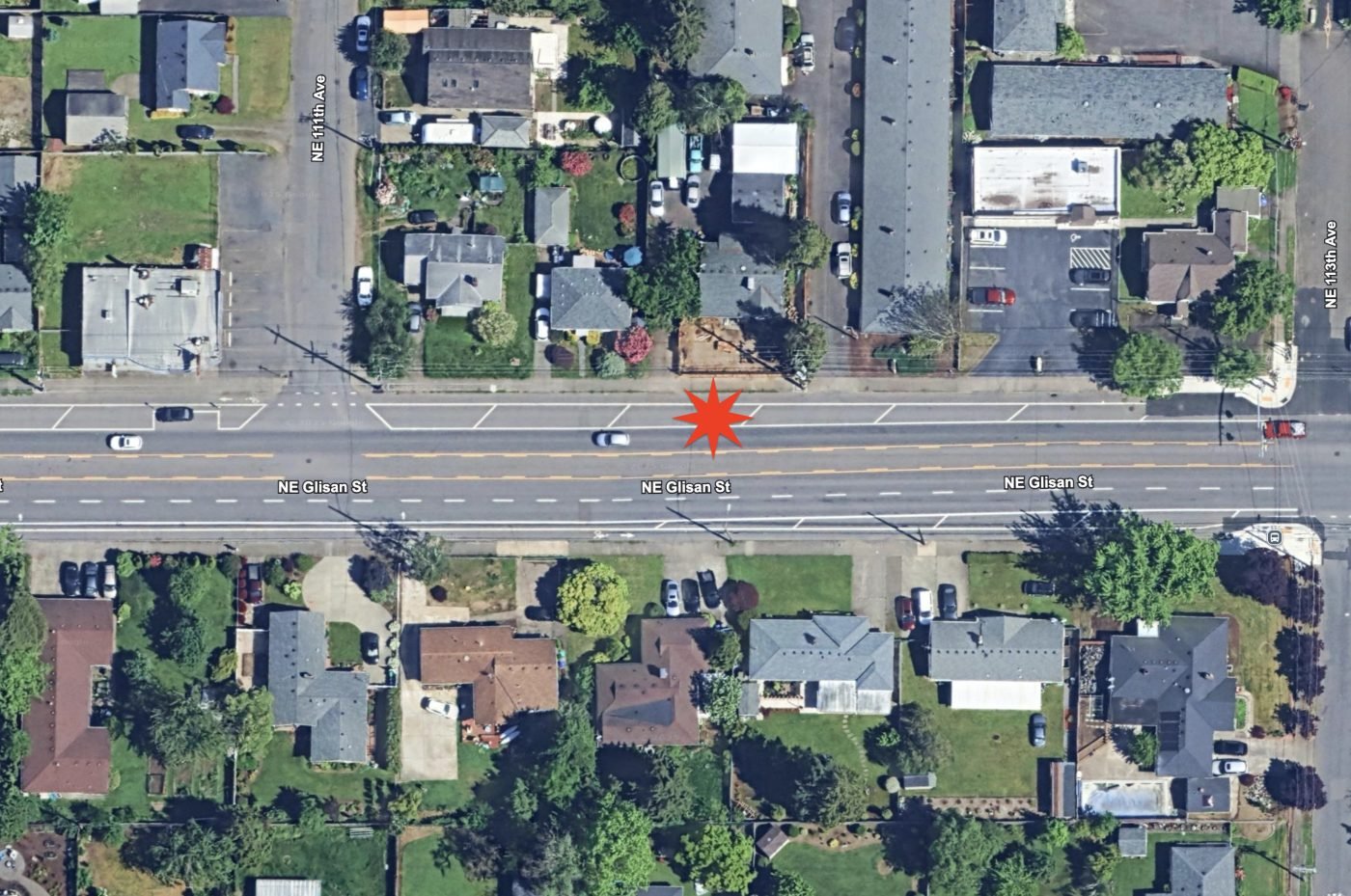
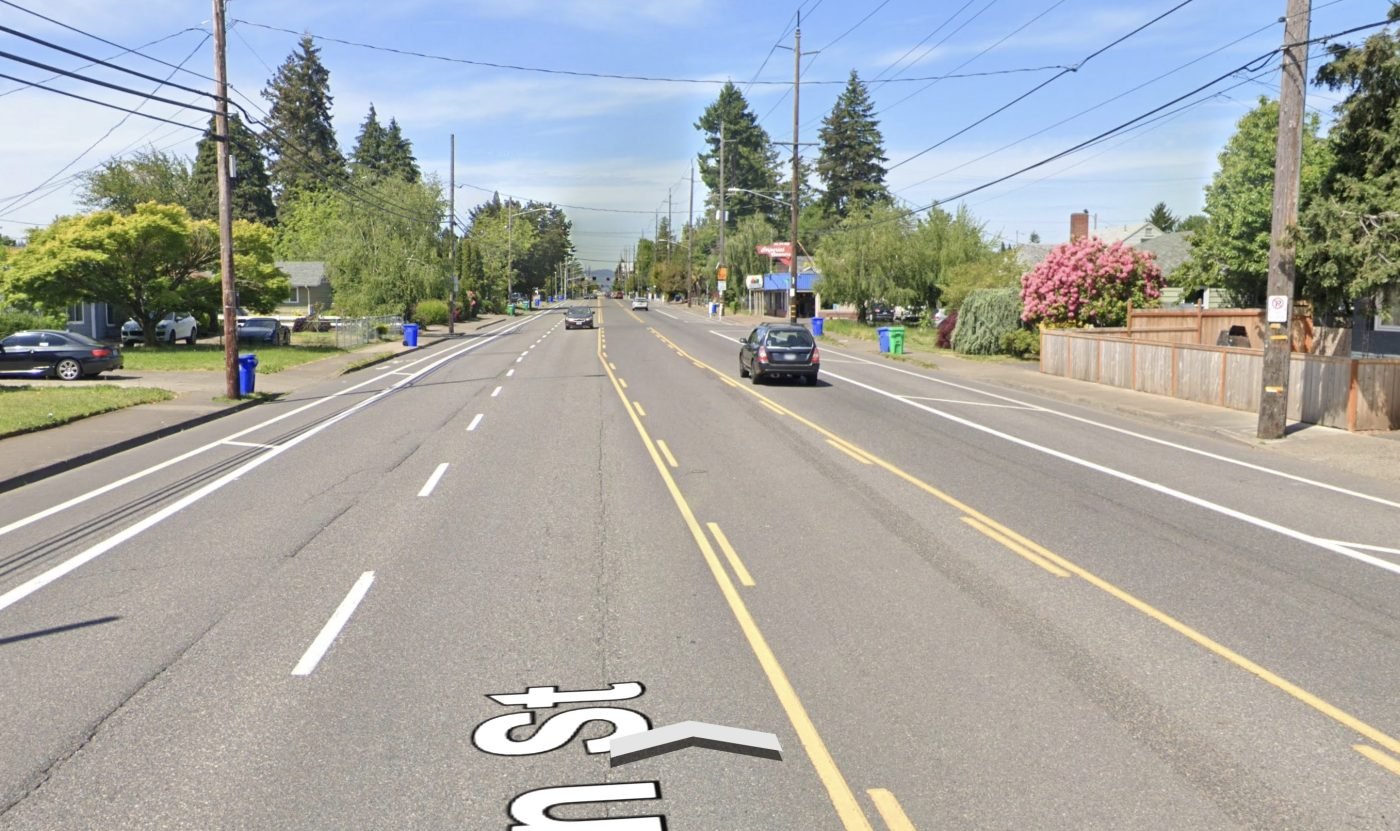
The Portland Bureau of Transportation changed the lane configuration on this street as part of their East Glisan Street Update project in 2022. That project lowered the speed limit (from 35 and 40 mph to 30 mph) removed one of the general travel lanes and added buffered bike lanes in each direction. Unfortunately PBOT did not install any physical protection for bike lane users. One year ago another bicycle rider was killed by a car driver just 0.8 miles east of last night’s fatality (at NE 128th). And in 2021, BikePortland reported on a major hit-and-run collision at NE Glisan and 114th that seriously injured three people.
If you have any information about this crash, email crimetips@police.portlandoregon.gov attn: Traffic Division and reference case number 25-297278.
Wheelchair user – 7:40 pm on NE 122nd near NE Glisan
Just over one hour later, another person was killed by a car driver. It happened near the intersection of NE Glisan and 122nd — just one mile east of the first fatality of the night. Police say they responded to find an adult male who had been struck by a driver. “The preliminary investigation indicates the male was crossing Northeast 122nd Avenue in a wheelchair when the incident happened,” states the PPB. The victim was taken to a nearby hospital but died early this morning.
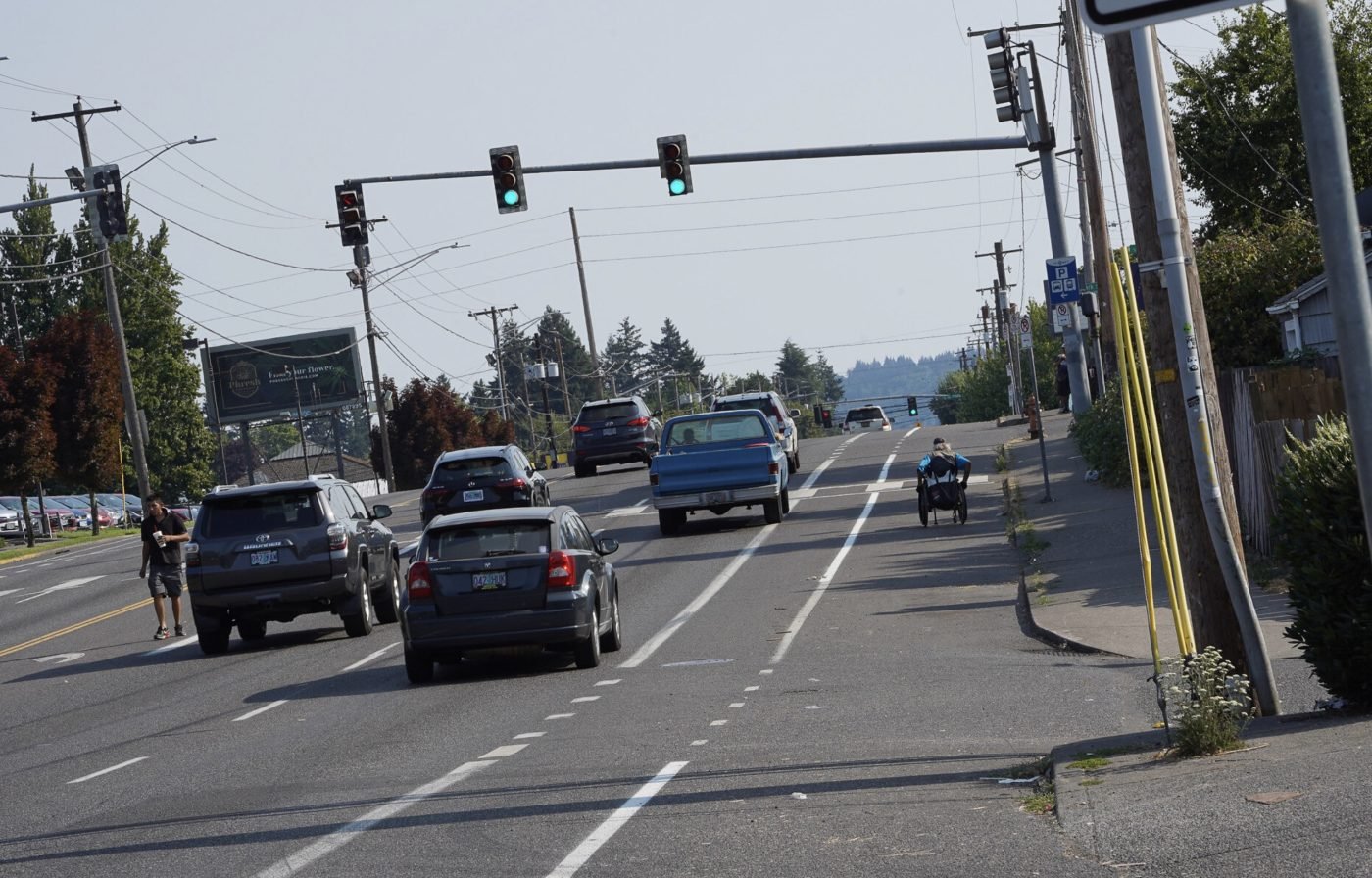

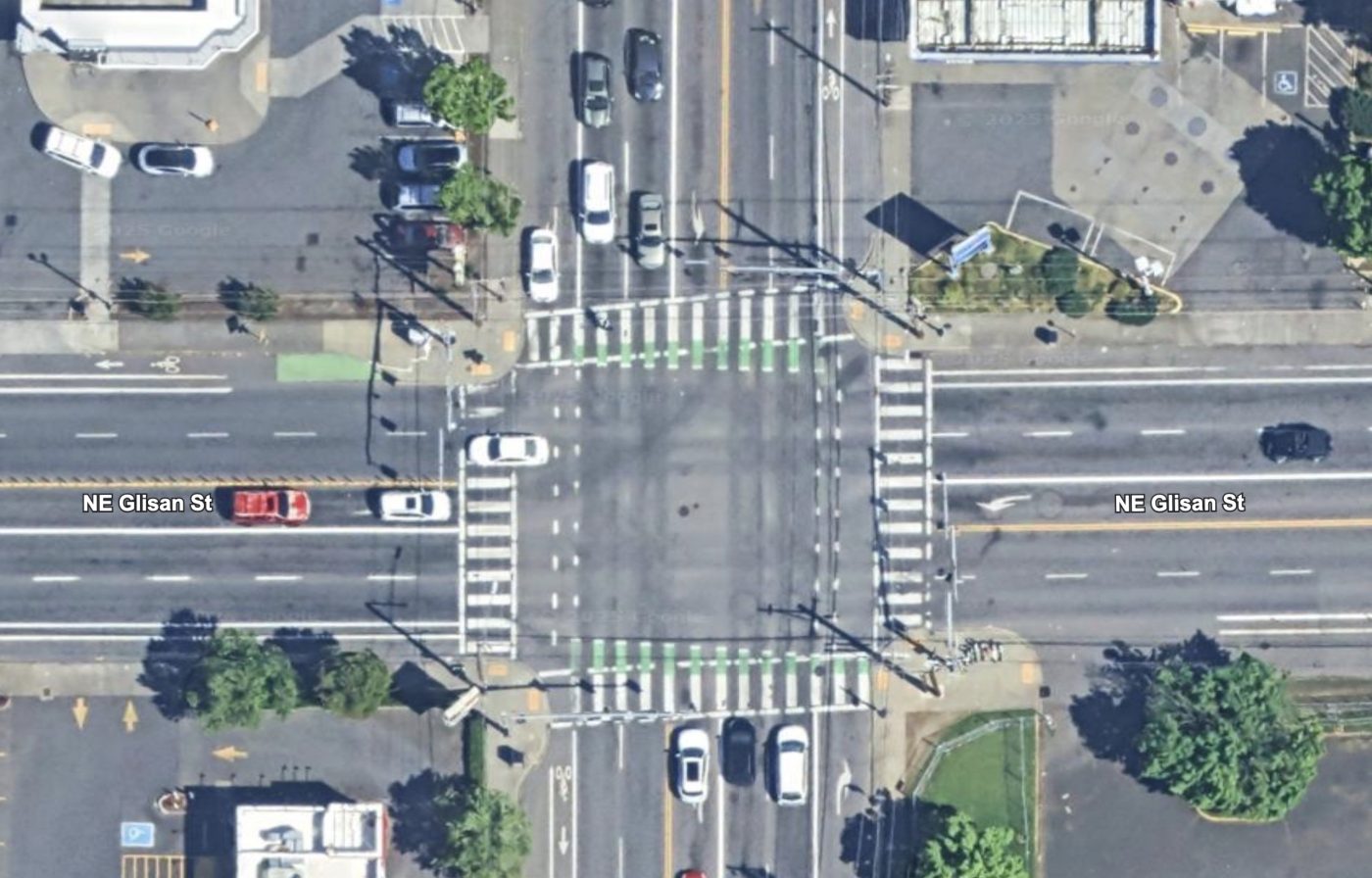
122nd is one of the deadliest streets in the city. It has claimed three lives so far this year and 14 people have been killed while using 122nd since 2021. During my time observing this street I often see wheelchair users in the roadway because the sidewalks are narrow and full of obstructions. When another person was killed near NE 122nd and Glisan in December 2023, I wrote, “122nd Avenue has been the focus of many speeches and plans over the past decade; but it remains a ticking time bomb of traffic tragedy and we’re years away from completion of infrastructure changes.”
The location where the man in the wheelchair was killed last night is a classic, car-centric stroad where car use dominates and everyone outside of a car is at risk. There are five general travel lanes and buffered, paint-only bike lanes. It’s on PBOT’s “high crash corridor” list and has a 30 mph speed limit. PBOT has major plans for 122nd and has already completed some updates. In 2021 I shared a video overview of the conditions and how PBOT plans to address all the safety problems on the corridor.
Police have spoken to the driver and an investigation is ongoing. If you have information on last night’s collision at 122nd and Glisan, email crimetips@police.portlandoregon.gov attn: Traffic Division and reference case number 25-297340.
Walker – 8:00 pm on NE 102nd next to the Gateway Shopping Center
About an hour-and-a-half later — and just 0.6 miles northwest from last night’s other fatal crash on NE Glisan — a person was killed while walking on NE 102nd. Police tell BikePortland it happened near the intersection of NE 102nd and NE Holladay. When police responded they found a female pedestrian who was already deceased.



This section of 102nd, is a slightly less terrible version of 122nd. It’s another “high crash corridor,” car-centric stroad with five general travel lanes and paint-only bike lanes.
Police have spoken to the driver and an investigation is ongoing. If you have information about this collision, email crimetips@police.portlandoregon.gov attn: Traffic Division and reference case number 25-297357.
These three fatalities put Portland’s year-to-date tally at 33 deaths — twenty fewer than we had at this same date last year. See more details on the BikePortland Fatality Tracker.

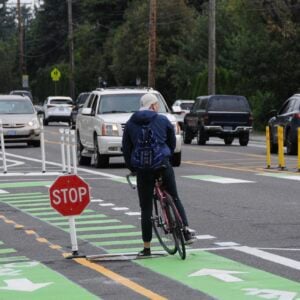
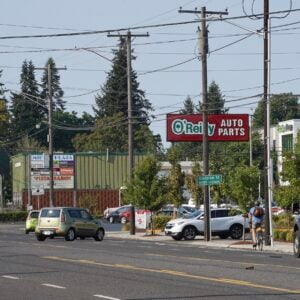


Thanks for reading.
BikePortland has served this community with independent community journalism since 2005. We rely on subscriptions from readers like you to survive. Your financial support is vital in keeping this valuable resource alive and well.
Please subscribe today to strengthen and expand our work.
Awful, awful, awful.
122nd and Glisan is also notorious bottle drop location. People bolt right in front of traffic to go from bus stop to the bottle drop. Lots of problems in that area.
By “notorious,” do you mean “busy”??
I think he means “notorious” in the sense that it is causing a huge number of headaches for the community around it.
So he’s not counting the people returning bottles as part of the community.
I’m not sure how you can conclude that… I am pretty sure that people can cause problems for the community in which they live.
Why is it bad to return bottles?
Thanks again for your coverage J.M. These tragedies are so normalized, yet it still needs the attention with the data for those who care. Thoughts for all the families involved.
122nd: I urge anyone in District 1 to contact their reps. As we are intimately aware, this is likely the only time during the year when street design change will have a chance to appear in the news. Unfortunately, neither Jaime Dumphy nor Loretta Smith believe protected bike lanes are a worthy goal. Candace is likely busy recovering from a house fire, but she’s at least supportive. I hope Families for Safe Streets, BikeLoud and streettrust will make a concrete request for a specific road design change.
111th/Glisan: “Parking protected” design might be a misnomer. Most of the adjacent blocks are no parking. This is better described as a buffered bike lane, although Portland makes no distinction between the two on its maps.
102nd would benefit from either road diet with medians and/or PBLs. The idea that people will want to live next to these streets was not really considered during the WWeek article on the Gateway. It really is not even close to on the radar for Dumphy or anyone involved.
hence my use of quotes. I thought about that and decided to use that term because it’s a known descriptor and that’s what the design would be referred to by PBOT.
Also, I’m curious what evidence you have for Dunphy and Smith not believing protecting bike lanes are a worthy goal. Thanks.
Yeah, I get that. Maybe it’s an odd, aspiring usage by PBOT? There’s neither consistent parking nor physical separation so IDK. Sometimes DOTs use specific words to exaggerate sense of safety/change when there is none. The use of the word “Greenway” in Portland is a great example of this.
I’ve emailed both.
Dunphy related that he thinks they were installed without public input, are generally more dangerous, and businesses are losing money because of them. He’s generally supportive of protected bike infrastructure downtown, but not in his district. This was directly related to the section on Halsey/Weidler. He would not respond regarding PBLs on 122nd. My impression is he’s open to listening, but generally disinterested in cycling/safe streets.
Smith’s record kind of speaks for itself. You certainly remember her nonsensical vitriol on the Rose quarter project, which gives you a very good idea of her perspective on transportation. For me she has been entirely unresponsive to enquiries re biking, and safe streets. I’m not aware she has said a lot of constructive or substantive things on the topic yet. She has promoted sidewalk funding, so maybe there’s some hope.
Again, this multiple slaughter could be the thing that wakes Smith up about street safety, this is a good time to contact her. Also contact all the councilors in other districts. Of course street safety is a citywide issue, even though these three killings happened in one district.
Hazlewood is suburban. Bike lanes are not easily made more safe with those very long blocks out there and much faster driving.
With physical separation for bike lanes at the intersections, a 20mph speed limit enforced by speed/red light cameras, medians for pedestrians, introduction of shorter sight lines with trees etc, and a narrowing of the lanes, fatal collisions like this would be incredibly uncommon. Those and other similar strategies are the predictably successful solutions that other countries do to solve this problem, even in less dense areas such as Hazelwood.
Mrs. PTB and I chatted with Dunphy at a D1 Meet and Greet thing earlier this year. Super nice guy and all in all I think I’m glad he’s my rep. In our chat, which wasn’t super long, but enough for us to briefly share with him what we liked and what we found frustrating about living in East Portland, road safety came up. I bike and run, my wife does home visits as part of her job and drives quite a bit. The 122nd rebuild came up and even though we both drive, we fully support making some roads, not a pain in the ass to drive on exactly, but make it so you can’t just zone out and then realize, “JFC, I just drove half a mile and I don’t remember any of it!”, you simply must stay engaged and alert, it’s hard to drive fast, etc.. Biking on 122nd was mentioned, in it’s current form neither one of us would dare bike on it. That needs changing! Dunphy seemed kinda cold to this and I want to say he brought up the 130s greenway and some of the streets in the one-teens that have seen crossing upgrades and stuff, ya know, take those instead sorta thing. That’s all great, but just because someone is biking why does that mean they can’t ride on the business street? If I’m pushed off that main thoroughfare, what do I miss that I might want to visit and give money to? I should be able to ride on that street without it being a life risking endeavor. Dunphy didn’t seem like he was with us on that one.
Not being excited or supportive of biking on major streets like 122nd is unfortunately a very common position — even for some cyclists and cycling advocates! I bet Dunphy tone will change after these deaths and after he took time to hear a different perspective about why riding safely on major main streets should be a priority.
I hear you. And I agree, maybe one of these horrific events will get more folks to thinkin’, “holy shit, maybe lets really fix this”, and then, like, really work to fix it. Doubtful! But maybe I’m wrong.
Also, there’s the time value of having a direct route. I bike on 122nd sometimes because it ends up being the most efficient or most effective route. It sucks because it’s car hell but I’ve got places to be. As it currently is, biking from Powell to I-84ish takes 20 minutes if you go on 122nd. Same time to drive it during rush hour (currently, according to Google Maps anyway). Doing the same cycling trip using the 130’s greenway adds an extra 5 minutes. That’s if you get lucky with signal timing. The whole point of encouraging mode shift is to give people convenient and safe options, not just an option that winds its way through neighborhoods.
Thank you so much PTB and Mrs. PTB. D1 needs you! I rarely rode off the sidewalks on 122nd as a kid. I can’t imagine riding it today.
This reflects my admittedly limited number of communication efforts with Dunphy. What an amazing place E Po. could be (for businesses, drivers, walkers and rollers) with PBLs and medians on 122nd. Can Dunphy take the next step after admonishing poor drivers?
We’ve been going to our n’hood meetings. They’re sparsely attended so we feel like it’s important for us to go and present a counter to some of the Boomer hot takes that sorta dominate n’hood meetings (we’re Gen X, so form your opinions of us as you wish). We’ve been able to listen to all three D1 reps and politely gripe at them. They’ve all been great and it’s awesome they’re coming out to talk and answer questions. In that regard, hats off to all three of them. It’s great to have East Portland representation downtown.
I’m especially into their efforts to GET SIDEWALKS BUILT OUT HERE. Absolutely crazy how many streets have no sidewalks. You’re so often either walking in the street or walking in the mud. Crazy.
I get the aversion to walking in the street, but I wonder If you and your wife have considered the wide variety of options other than the standard American version of residential streets: sidewalks wide asphalt streets. I’d like to see things like the Roseway Parkway, and other solutions like divertors and permeable narrow lanes. Many times there are less orthodox, cheaper options that give kids nooks to play and take space from cars. I would hope that PBoT would give neighborhoods those options.
PTB,
Remember, any Portland resident who wants sidewalks built in their neighborhood can initiate or join a Local Improvement District (LID).
In an LID, nearby property owners agree to share the cost of building new infrastructure , such as sidewalks, curbs, or street paving — that directly benefits their properties. The Portland Bureau of Transportation (PBOT) helps organize the district, estimates costs, and manages construction. Once the LID is approved by a majority of affected owners and City Council, PBOT builds the project, and each property owner is billed for their share (usually payable over time through property taxes).
We have sidewalks on our street. Mostly. Our house and several houses down, sidewalks. My immediate neighbor to the north…no sidewalk. It’s a crazy hodgepodge and I don’t understand why some of us have them, some of us don’t. I’m less concerned with our very quiet side streets not having sidewalks. But I live between Powell and Holgate and both streets have very spotty sidewalks. It’s not too big a deal if you’re walking on SE 108th and there’s no sidewalks. It’s sketchy and unacceptable that Powell and Holgate don’t have sidewalks. Also they are incredibly poorly lit (I’m told they are too wide (holgate for sure) to have street lighting on only one side of the street, according to city standards. I’ve also heard that when we switched to LEDs whatever year that was, really the street lights should have been lowered. They are too high for the light output. I’ve heard this from a friend that works for the city in a department that has some knowledge of exactly this sort of thing).
I live in Powellhurst Gilbert, juuuust on the Lents boundary. PHG is the poorest and most ethnically diverse n’hood in the city if I’m not mistaken. Forming a LID and asking people to pony up through even higher property taxes, that’s simply not going to happen. Frustratingly I pay more in property taxes than some friends that own homes far closer in. I’m not an anti-tax guy, not by a long shot, but it kinda stings to know what we pay and then see what we get in East Portland. Tax the shit out of me, but please, Portland better be as close to a utopia as possible.
Dunphy posted about this on Instagram right away. He clearly is concerned. Good time to suggest how he and the city might help.
Thanks Chezz. This is good to hear! I just found it. He wants the city to “Put together an immediate response,” which is fantastic news!
On the other hand his entire speech concentrated on “fixing your driving.” It’s certainly better than telling people walking to wear high-viz coats. It’s nice to hear, but also one of the easiest things he can do. There was no mention of changing street design. No mention of BikeLoud, or Families for Safe Streets. ~70% of the deaths occur on, 8% of Portland streets. Changing road design is an enormous part of VZ, and Dunphy is not part of that effort yet.
Right. I’m not thrilled with his response. But he is obviously emotional about it. Which is good. So let’s give him ideas of what he can do as a city councilor.
Each of these deaths is terrifying. Our elected leaders, administrators, and bureau leads should be held responsible for allowing deadly transportation conditions system-wide to persist.
It is obvious that a road like this would be deadly, especially for
people outside of cars. But as interventions trickle in, here’s a question I have. The intersection nearest where the person riding a bike was killed appears to have newer curb extensions.
Reducing crossing distances on this overly wide road is important work, but I’m always confused about their compatibility with bike lanes. In this location the extension appears to squeeze the bike lane closer into the car lane, which is what I usually experience with these, and it feels like rolling the dice each time I ride past one.
On streets with curbside parking, extensions just replace a car, but with a curbside bike lane, how can this work better?
Let’s imagine this article, and all the similar ones news that Jonathan and other journalists report, but with “homeless person” or “suspected gang member” substituted in for “driver” as the killers. Our electeds and others would be crying out about the need to curb such bad behavior not just by the particular individual group members who killed a pedestrian, bicyclists, wheelchair user, or other human; they would be excoriating the entire category to which those killers belong. But when “motorists” kill and injure, over and over again, causing such loss and pain in our communities, leaders somehow cannot see the categorical “problem” the way they do when people label “homeless” or “suspected gang members” as “dangerous.” To be clear, there is a great deal about how we design and regulate (or fail to regulate) road use that is to blame for these deaths. Jonathan points that out here and elsewhere, But the idea that motorists regularly engage in deadly behavior (something I encounter every day as a bicyclist and pedestrian even on less notorious neighborhood streets), and that the deadly behavior has been steadily worsening over the past couple of decades … just not of interest as a public health and quality of life issue that our leaders could and should actually be improving.
You don’t have to imagine it—look to Fox News, et al, and their relentless coverage of any murder that happens to be committed not by a U.S. citizen but by an “illegal.”
“street racer strikes and kills pedestrian” = jail the driver forever and crush his car in a public shaming ceremony!
“motorist strikes and kills pedestrian” = the pedestrian was probably dressed in all black and jaywalking and also maybe they were homeless so it probably doesn’t even matter, anyways i’m off to drive my car 15 mph over the speed limit with my lights off in the rain while scrolling tinder and eating a bag of doritos
There is something to be said for how perfect of a suicidally empathetic strawman argument this is. To equivocate unbelievably unproductive members of society with people going to work, taking kids to activities, school, etc., because there are negative outcomes on occasion, is insane. Ironically, we have enforcement protocols that could eliminate all of these issues if they were allowed to be implemented by the clinically oversensitive.
I don’t think Lois was suggesting the groups are equal, but instead just pointing out that categorical thinking runs rampant in regards to some groups of people but not others, and that what results is daily dangerous behavior generally overlooked or seen as a necessary evil.
BP’s language is much more neutral than PPB’s: Each of PPB’s releases about these traffic mishaps noted that “the driver stopped and is COOPERATING with police” (emphasis is mine).
Such language creates and perpetuates the impression that deaths of people outside of cars are just the cost of driving in America, and as long as you stop and “cooperate” with police, the carnage will be allowed to continue.
yes thank you for noticing that Fred. I thought for a while about how to convey that information in a different way than the PPB. And let’s not forget that when all the other local media outlets “report” on these crashes, they simply copy/paste the PPB statement (without telling their readers that’s what they’ve done).
“Spoken to the driver” conveys the same thing. It means the driver stopped and remained on the scene, and is (probably) speaking freely without lawyering up, which is generally what people do when they are co-operating. It also means the police did not make an arrest, as they would have in the case where there was evidence the driver was clearly criminally culpable (hit-and-run, drunk driving, stolen vehicle, reckless driving, etc.)
What makes your phrasing different?
Thanks for asking. My phrasing is a lot different. It’s about as neutral as I can be while still conveying the information. When police say a driver “remained on the scene” and “was cooperative” it can sound like the driver is being commended for doing things that should be normal. In fact, the only reason police say those things is because hit-and-run is so common. So we have a situation where deviant, criminal behavior is so normalized that people are celebrated for just not being terrible, and in so doing, there’s an air of sympathy and absence of guilt that comes with the PPB framing.
My framing is very basic. It just tells the reader the facts: That the person did not flee and that the police have engaged with them. I think my phrasing does that in a way that confers nothing positive or negative to the driver.
Yours is neutral, I agree, but I find the standard police one to be so as well. You appear to read a lot into their phrasing that I just don’t see.
Sticking with the bland, informative, and neutral, you might say “Driver remained on the scene and was interviewed and released/arrested by the police who did/did not issue a citation. Investigation is ongoing.”
That the driver did not leave the scene and whether they were arrested or cited are all materially important to understanding the facts about what happened.
I still think my phrasing is much better and that the PPB one is not good.
If the police talked with the driver, it’s obvious they remained on the scene. And I don’t mention citation because people almost never cited at scene. Police don’t cite until investigation is complete, and a cite at the scene could unduly influence future case in court.
C’mon, 2wheels – you must have had that lesson in 7th-grade English class about the difference between subjective and objective.
“Cooperation” is clearly subjective and implies that the driver’s behavior is legally and morally correct AFTER the incident, so one can then INFER that the driver’s behavior was similar PRIOR to the incident, meaning that *the driver did nothing wrong*.
Now it may be true: the driver may have done nothing wrong – the guy in the wheelchair could have thrown himself in front of the car. But every time the police frame a traffic death in terms of “driver cooperation,” they effectively exonerate the driver BEFORE the investigation is complete. Almost every person who reads a PPB release framed in this way will shrug and think, “The driver must have done everything she could – otherwise why would she cooperate with investigators?”
“Talking with investigators” is objective fact and introduces no subjective nuance (or very little).
“Cooperation is clearly subjective and implies that the driver’s behavior is legally and morally correct AFTER the incident”
There are many ways to behave legally and/or morally that are not cooperative, so those are not at all synonymous. Between “legally correct”, “cops talked to them”, or “cooperating”, the third is by far the most informative.
Given the low number of variables at play, I don’t think “cooperating” is overly subjective, regardless of what your 7th grade teacher told you.
And, realistically, as a random member of the public reading about an incident in the news, what does it matter what I think? No one is going to make any decision based on my opinion, if I even have one at all after scanning another 3 line tragic story. So this is pretty low stakes even if I’m an outlier and everyone else sees the stories as exonerating. Which I doubt because I don’t think everyone else is a naive idiot and that I’m the only one who can see things clearly because I ride a bike and know how it really is, man.
If every news outlet in the world used Jonathan’s preferred language, exactly zero would be different.
If the driver is speaking to the police, the police know that, but they do not know if they are “cooperating”.
A driver who hit the victim because they swerved into the bike lane because they were speeding and texting could tell the police, “I was driving the speed limit when the biker suddenly swerved in front of me and I couldn’t avoid hitting them”.
I’d hardly call that cooperating, and the police–who won’t know whether what the driver is saying is true or not until further investigation–shouldn’t either.
So saying the driver “spoke with police”, or “was interviewed” is better than saying “cooperated” unless enough investigation has happened to confirm that the driver was telling the truth.
Kudos to you and Fred (and Jonathan). This might be one of my favorite discussions for months. Probably also for all the werd noerds out there.
All of these fatal crashes occurred after dark or around sundown, when all users can’t see as well. A lot of these streets are rather dark at night in Hazelwood (and much of the rest of East Portland). PBOT recognizes this and is getting funding for increasing streetlight lighting, especially on 122nd, as discussed at the last BAC meeting.
Finally someone figured out the problem here. Grats!
The city annexed this area between 1986 and 1991, so yeah, after 35 years, they finally figured it out.
Sad news. I look forward to getting more information about exactly what happened in each incident, such as speeds of vehicles, lighting, and more. Please keep us updated.
I live with in a few blocks of all these accidents and they are all along my bike route.
These three locations could all use improved lighting. Traffic speed has been reduced but, many still speed.
The bike and pedestrian updates to Halsey and Glisan between 102nd and 122nd have made this area feel safer as a cyclist. There are now two signaled pedestrian crossings on Glisan, there used to be zero. But riding on this stretch of Glisan at night still feels risky due to traffic speed and lack of lighting. Many still ride on the sidewalks along Glisan or ride on the bikeway on NE oregon.
Pedestrians cross 122nd, not at the intersection, to get to the bottle drop or MCdonalds. The proximity of the intersection makes it so dangerous when people are crossing at night and cars are speeding. Same scenario occurs frequently at Stark/122nd and Burnside /122nd.
Be safe everyone.
The real vision zero would be round-a-bouts instead of traffic lights. Look at Carmel, Indiana and the numbers they have accomplished. That is what true vision looks like. We deal with the fake version that glosses (green paint in this case) over the problem.
Roundabouts require more space than a conventional intersection, so are hard to retrofit in a dense urban area.